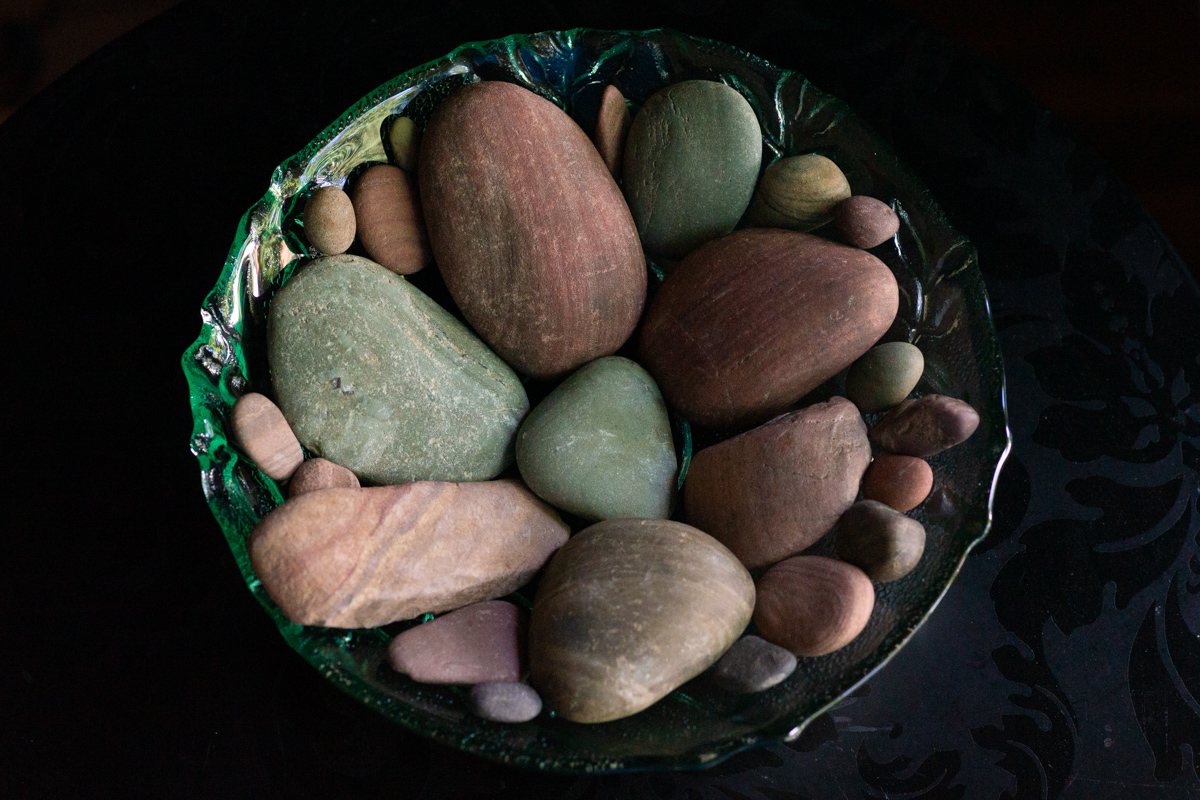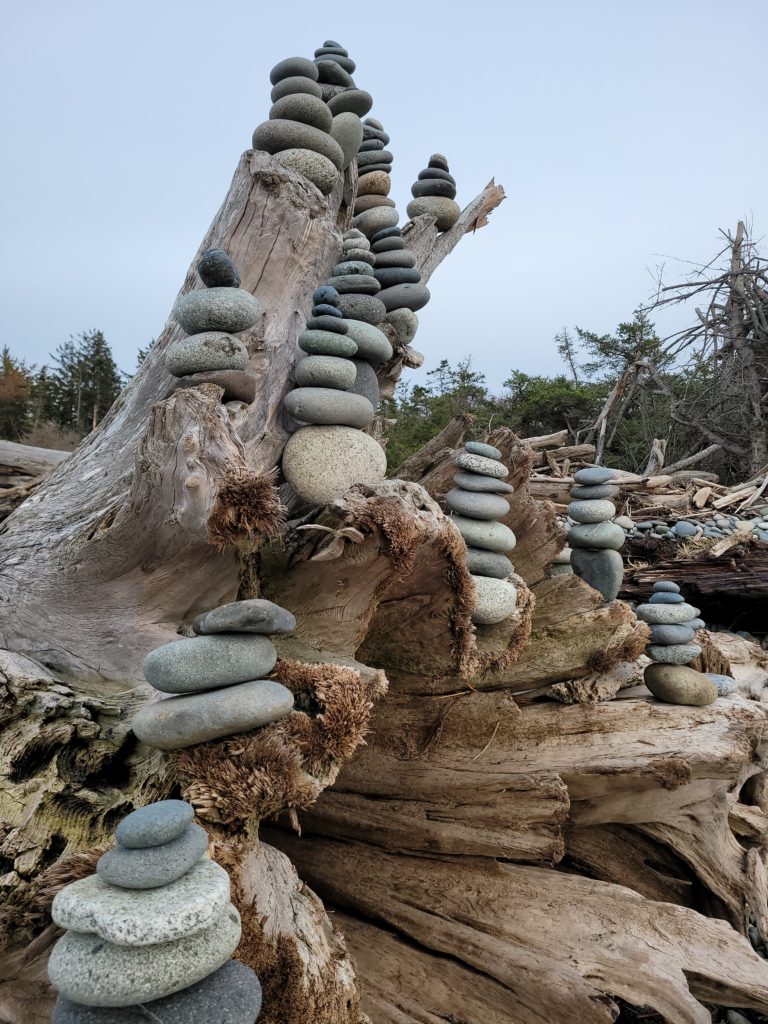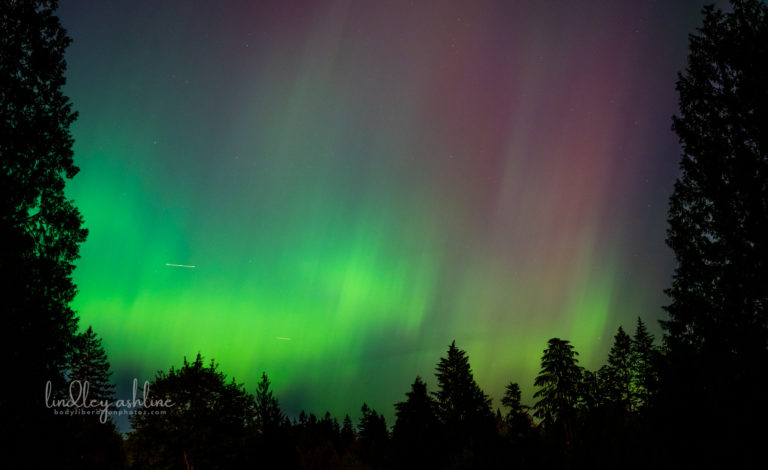Cuttings and quartz
Image description: A green glass bowl of smooth pebbles in soft red and green tones and mixed sizes, stones Lindley found in a river in Idaho.
I’ve been thinking a lot lately about the differences between the houseplant groups and the rockhounding groups that I’m in, and how they reflect larger patterns. (All the groups are at least semi-local to me in Washington state.)
Rockhounding is the finding and acquiring of cool rocks, essentially. It includes beachcombing. It’s implied that you’re finding them in the wild yourself, though a rockhound — anyone who enjoys finding and/or collecting — probably buys shiny rocks, too.
The rockhounding groups tend to feel like a zero-sum environment. They’re often full of people bragging about gem and mineral finds in exclusive spots that they won’t reveal*, or from private claims that they happened to know the right person to access.
There’s a lot of griping about less-dedicated hounders and amateurs cluttering up public-access hounding areas like Hansen Creek**, and a lot of competitiveness to have the “best” finds.
When people ask questions like “What’s your favorite rock tumbler***?”, they tend to receive generic or dismissive answers like “Go buy one at Harbor Freight.” It’s hard to learn by watching, or to get to know people.
I don’t generally see people making friends and connections they didn’t already have.
The houseplant groups, by contrast, feel extremely welcoming. There’s constant cheerful sharing — of knowledge, of physical supplies, of labor, of plants.
Cup-of-sugar requests like “Is anyone willing to share some leca**** so I can learn how to use it?” or “Does anyone have any spare 6″ nursery pots?” are usually graciously and immediately filled. There are entire threads, often, dedicated to fulfilling people’s plant wishlists.
People constantly meet up to trade cuttings. If someone finds a particularly rich selection of plants at a store, they’ll post details and prices so that everyone knows. People will even post and say, “Hey, I’m at Store X and they have Uncommon Plant Y, anyone want me to buy one and drop it off for you?”
I see friendships made, connections built, small businesses be created and thrive. Sure, people like to show off their rare plants or successful rehabs, but it’s mostly in a good-natured way that doesn’t feel competitive, just joyful.
I don’t think it’s any coincidence that the former groups are primarily populated and led by white men, and the latter by women/BIPOC/LGBT+ folks.
*With some justification, because when good rockhounding spots go public, they tend to be overrun with trash, needles, graffiti, illegal hunting and so on until the landowner or government property owner shuts it down. So there’s a whole debate about this with reasonable points on each side, but it’s not relevant here. I’m just acknowledging it because it’s a big deal in this subculture.
**An area near North Bend, WA, known for fairly easy access to quartz crystals.
***I spelled this “tumblr” twice and had to backspace twice.
****Small porous clay balls used in propagating tropical plant cuttings.

Every Monday, I send out my Body Liberation Guide, a thoughtful email jam-packed with resources on body liberation, weight stigma, body image and more. And it’s free. Let’s change the world together. Subscribe »
Hi there! I'm Lindley. I create artwork that celebrates the unique beauty of bodies that fall outside conventional "beauty" standards at Body Liberation Photography. I'm also the creator of Body Liberation Stock and the Body Love Shop, a curated central resource for body-friendly artwork and products. Find all my work here at bodyliberationphotos.com.








